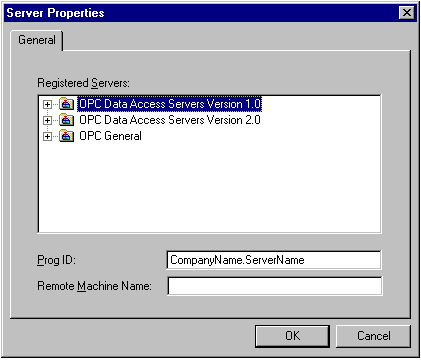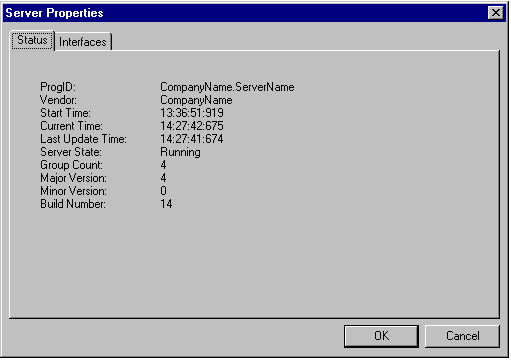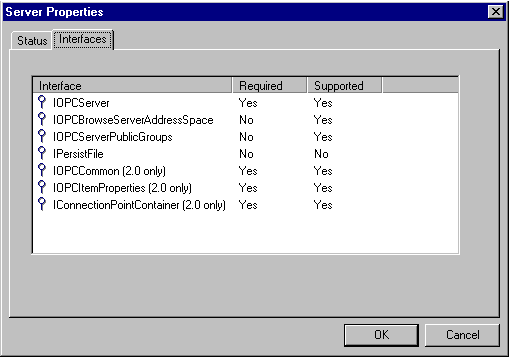Server Connection
A server connection provides a link between an OPC server and this client. Through this connection, groups will be added.
Select NewServer... from the Edit menu or click the toolbar button to create a new server connection using the following property sheet:

Prog ID
Specify the Prog ID of the OPC Server the client should connect to. You can browse for registered servers by expanding any of the following branches:
OPC Data Access Servers Version 1.0 - Data Access 1.0 servers should self-register and add their Prog ID to this component category. Servers that are properly registered will be listed under this branch.
OPC Data Access Servers Version 2.0 - Data Access 2.0 Servers should self-register and add their Prog ID to this component category. Servers that are properly registered will be listed under this branch.
OPC General - All Servers should add a special OPC key in the system registry to be identified as an OPC server. This method allows for older clients and servers to be used (the preferred method is to use component categories). Servers that are registered with this key will be listed under this branch.
Double-clicking on any registered server will automatically update the Prog ID field.
Remote Machine Name
Specify the name of the machine the OPC server (specified by the Prog ID) resides on. If the server is located on the same machine as the client, leave this field blank.
Once the client makes a successful connection to a server, invoke the server properties by selecting Properties... from the Edit menu to view the server status and the supported server interfaces.

The server status page details the status of the server. The client queries the status of the server and obtains the following information:
Vendor – A String that specifies vendor specific information.
Start Time - Time the server application was started.
Current Time - Current Time as known by the server.
Last Update Time - Time the server sent the last data update to the client on this connection.
Server State - The current state of the server. Valid states are Running, Failure, No Configuration, Suspended, and Test.
Major Version - Major version of the server software.
Minor Version - Minor version of the server software.
Build Number - Build number of the server software.

This interface page lists the interfaces that are required at the server level. Interfaces not required are considered optional. The "supported" column states which interfaces this server supports.
Visual/Operational Changes
When the TcOpcClient adds, connects, or disconnects a server connection you will notice a change in the appearance of the server connection. The image that appears to the left of each server connection will change to one of the following:
 The client is connected to the server.
The client is connected to the server.
 The client is disconnected from the server.
The client is disconnected from the server.
 The client could not connect to the server (the server may not be properly registered).
The client could not connect to the server (the server may not be properly registered).